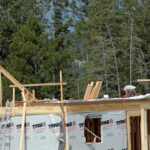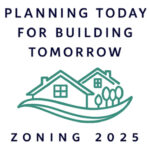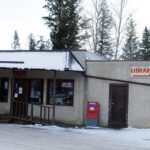Home »

Imagine a sustainable Kimberley
Kimberley’s Integrated Community Sustainability Plan (Imagine Kimberley) was initiated by former mayor Jim Ogilvie and adopted by the city in 2011.
It sets the stage for us to begin what I believe needs to be a serious discussion about how to make our city sustainable, but in my opinion the plan itself is inadequate to accomplishing the task at hand. By itself, Imagine Kimberley will not get us where we want to go.
Imagine Kimberley sets out four sustainability objectives and five community priorities. The four sustainability objectives all have to do with reducing any negative impacts we as a city might have on people and the environment, while the five community priorities “represent the important overarching values of the community and what is required to succeed.”
These values are: Enriching Community Life; Enhancing the Tourism Experience; Ensuring Economic Viability; Protecting the Environment; and Partnering and Collaborating. So far so good – I think we can all agree that these are worthwhile pillars on which to build a viable and sustainable community.
But let’s take one, Ensuring Economic Viability, and examine it for specifics. Here’s what the plan has to say:
“By Ensuring Economic Viability, in the year 2025, Kimberley’s economy is robust, and further diversified into learning, professional services, health, light industry and tourism. The economy supports a high quality of life in the community through wages, and local businesses products and services. Community members in turn shop locally whenever possible to keep money circulating throughout Kimberley.”
This utopian vision described for Kimberley merely paints an ideal vision of the future we want. In terms of how we get there, Imagine Kimberley is virtually devoid of specifics. As an action plan, it simply isn’t good enough.
I believe we need to set specific, actionable goals and objectives, with key performance indicators and accountability built into every one of the steps along the way. We need a plan that sets out in concrete detail how we will arrive at our destination in 2025. And we need to be flexible in our approach, so if something isn’t working we can draw from a number of other ideas in the wings.
To get to our destination, I believe we must set aggressive targets and work hard to achieve them. For example, to eliminate our annual five per cent tax increase we need to see 90 new homes built every year, each home paying about $5,000 per year in new residential taxes (we have been averaging about 10 new homes per year). That would be clearly an unrealistic target at this time, but my point is that we cannot rely, as we have in the past, on natural growth – we must make it happen. This can only be done by setting specific targets, and achieving them.
Economic development is not community development. Economic development is the action we take to increase our standard of living and economic health. Community development is the process we use to take collective action and generate solutions to common problems. Community development starts from the principle that within any community there is a wealth of knowledge and experience which, if used in creative ways, can be channeled into collective action to achieve desired goals.
We have knowledge and expertise in abundance, but it will also take money to achieve the community development goals set forth in Imagine Kimberley. With your support, as Kimberley’s next mayor I will take action to get us closer to the destination this document envisions in 2025.
– Don McCormick is a City of Kimberley Councillor who is running for the mayoral seat in the Nov. 15 election.








